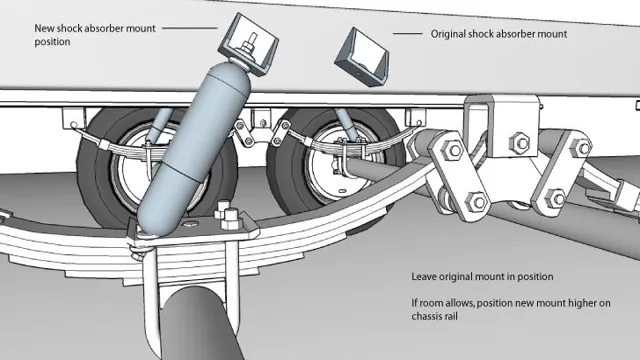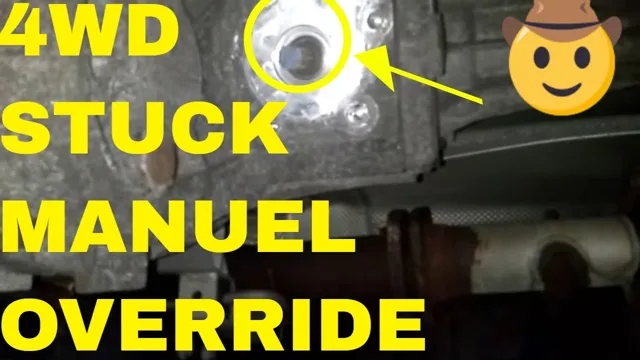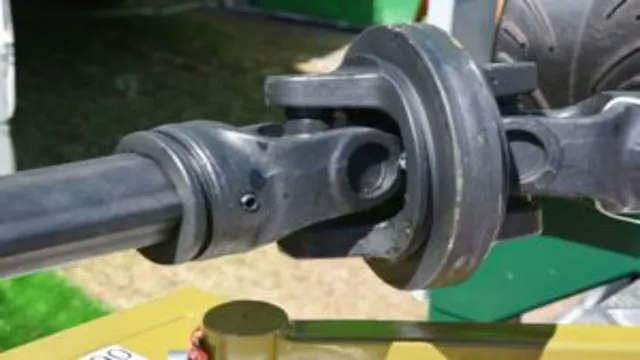Can You Paint JB Weld (Salvage Secrets)
Yes, JB Weld can be painted once it has fully cured. Make sure to clean and prepare the surface properly before applying paint for the best results.
Is Sanding Important Before Painting Over JB Weld?
Yes, sanding is crucial before painting over JB Weld or any other epoxy-based adhesive. JB Weld is a strong, versatile epoxy that forms a durable bond when properly applied. However, its surface can be quite smooth and may not provide an ideal surface for paint to adhere to. Sanding serves several important purposes in this context.
Firstly, it roughens up the surface of the JB Weld, creating a texture that allows the paint to grip onto it more effectively. This ensures better adhesion and reduces the likelihood of the paint peeling or chipping over time.
Secondly, sanding helps to remove any imperfections, bubbles, or uneven spots in the JB Weld application. This results in a smoother and more even surface for painting, which is essential for achieving a professional-looking finish.
Sanding also helps to remove any contaminants or residues that may be present on the JB Weld surface. This includes dust, dirt, or oils that could interfere with the paint’s adhesion.
To ensure the best results, it’s recommended to start with a coarse-grit sandpaper to do the initial roughing of the surface, and then progressively move to finer-grit sandpapers for a smoother finish. After sanding, it’s important to clean the surface thoroughly to remove any dust or debris before applying paint.
Sanding before painting over JB Weld is a crucial step that promotes better adhesion, smoothens the surface, and ensures a clean, even finish. This preparation work significantly contributes to the overall quality and longevity of the painted surface.
Why Should You Paint Over JB Weld?
Painting over JB Weld serves both functional and aesthetic purposes.
Functionally, JB Weld is often used to repair or bond various materials, such as metal, plastic, wood, and more. While it provides excellent strength and durability, it may not always match the appearance of the surrounding material. Painting over JB Weld helps to blend the repaired area with the rest of the surface, providing a seamless and uniform finish.
Painting serves as a protective layer. It shields the JB Weld from environmental factors like moisture, UV rays, and chemicals that could potentially weaken the bond over time. This added layer of protection helps to extend the lifespan of the repair.
Aesthetically, painting over JB Weld can enhance the overall look of the object. This is particularly important if the repaired area is visible, as a well-painted surface can make the repair virtually indistinguishable. It also allows for customization, enabling you to choose colors that match your preferences or the surrounding environment.
Painting over JB Weld is a practical and aesthetic choice. It provides a protective barrier, enhances the appearance, and ensures that the repair blends seamlessly with the rest of the surface.
Does JB Weld Bond To Paint?
JB Weld is designed to bond to a wide variety of surfaces, including metal, wood, plastic, ceramics, and more. However, it is not specifically formulated to bond directly to paint.
If you intend to use JB Weld on a painted surface, it’s recommended to prepare the area properly. This typically involves removing any loose or flaking paint and ensuring the surface is clean and free from contaminants. Once the surface is properly prepared, JB Weld can be applied for bonding or repairs.
Keep in mind that while JB Weld can adhere to painted surfaces, its bond may not be as strong or reliable as when applied to bare, properly prepared materials. Additionally, if the paint is old, deteriorating, or not well-adhered to the substrate, the bond may be compromised.
If you need to bond something to a painted surface, it’s a good idea to perform a small test in an inconspicuous area to ensure that the JB Weld adheres satisfactorily. If possible, it’s often better to apply JB Weld to bare, clean surfaces for the strongest bond.
How Long Will The Paint Stick To JB Weld?
The longevity of paint adhering to JB Weld depends on several factors, including the quality of surface preparation, the type of paint used, and the environmental conditions to which the painted surface is exposed.
When JB Weld is properly prepared and primed before painting, and the paint is of good quality, adhered well to the surface, and applied correctly, the paint can last for a long time. In some cases, it can last just as long as paint applied to other surfaces.
However, if the surface was not adequately prepared, or if low-quality or incompatible paint was used, the paint’s adhesion to JB Weld may not be as strong. In such cases, the paint may start to peel, chip, or degrade sooner than if it were applied to a properly prepared surface.
Environmental factors like exposure to extreme temperatures, moisture, chemicals, or UV radiation can also affect the longevity of the paint. For instance, outdoor applications may experience more wear and tear compared to indoor applications.
To ensure the best and longest-lasting results, it’s important to follow proper surface preparation techniques, use high-quality paint, and provide appropriate protective measures if the painted surface will be exposed to harsh conditions. Additionally, regular maintenance and touch-ups can help extend the life of the paint on JB Weld repairs.
Are There Any Issues That Can Arise When You Paint Over JB Weld?
Yes, there are potential issues that can arise when you paint over JB Weld, especially if the surface is not prepared properly or if incompatible materials are used. Here are some common problems that may occur:
- Poor Adhesion: If the JB Weld surface is not properly cleaned, sanded, or primed before painting, the paint may not adhere well. This can lead to issues like peeling, flaking, or bubbling.
- Cracking or Chipping: If the JB Weld repair experiences a lot of stress or movement, the paint may crack or chip over time. This is especially true if the underlying bond is not strong or flexible enough to withstand the forces.
- Incompatibility with Paint: Some types of paint may not adhere well to certain formulations of JB Weld. It’s important to choose a paint that is compatible with the specific type of JB Weld being used.
- Discoloration or Staining: If the JB Weld is not fully cured or if it contains contaminants, it can cause discoloration or staining to the paint. This can be more pronounced if light or transparent colors are used.
- Environmental Factors: Extreme temperatures, moisture, or exposure to chemicals can affect the longevity of the paint on JB Weld. For example, outdoor applications may require special paints or sealants to withstand the elements.
- Surface Imperfections: If the JB Weld surface is not properly smoothed or leveled before painting, any imperfections or irregularities may become more noticeable once painted.
Tips On Painting Over JB Weld
Painting over JB Weld can be a successful endeavor if done correctly. Here are some tips to ensure a smooth and durable finish:
Surface Preparation
- Clean the JB Weld surface thoroughly to remove any dirt, grease, or contaminants. Use a mild detergent or rubbing alcohol.
- Sand the JB Weld surface lightly with fine-grit sandpaper to create a slightly rough texture. This promotes better paint adhesion. Clean away any sanding residue.
Priming
- Consider applying a suitable primer before painting. This helps create a strong bond between the JB Weld and the paint. Make sure the primer is compatible with both JB Weld and the type of paint you plan to use.
Choose the Right Paint
- Use a high-quality paint that is compatible with the type of JB Weld you’re working with. Acrylic or epoxy-based paints are often good choices for adhering to epoxy surfaces.
Application
- Apply paint in thin, even coats. Avoid heavy application as it may lead to drips or uneven surfaces.
- Allow each coat to dry completely before applying the next one. Follow the manufacturer’s recommended drying times.
Use Proper Techniques
- If using spray paint, maintain a consistent distance from the surface to achieve an even coat. Overlapping strokes slightly can help ensure uniform coverage.
Avoid Environmental Extremes
- Paint in a controlled environment with moderate temperature and humidity levels. Extreme conditions can affect the drying and curing process.
Protect the Area
- Cover nearby surfaces or areas that you don’t want to be painted. Use painter’s tape or plastic sheeting to protect these areas from accidental overspray or drips.
Allow for Adequate Curing Time
After the final coat of paint, allow sufficient time for the paint to cure. This ensures a strong and durable finish.
How Long Does JB Weld Take To Cure?
JB Weld typically takes about 4-6 hours to set and around 15-24 hours to fully cure. However, curing times can vary depending on factors such as temperature, humidity, and the specific type of JB Weld product being used.
Warmer temperatures tend to expedite the curing process, while colder conditions can slow it down. It’s important to note that even though JB Weld may feel hard after a few hours, it’s still in the process of curing and reaching its maximum strength.
For critical applications, it’s advisable to wait the full recommended curing time before subjecting the bond to heavy loads or stress. Always consult the specific product’s instructions for accurate curing times.
FAQ:
Can JB Weld be painted over?
Yes, JB Weld can be painted over. However, proper surface preparation is crucial for a successful paint job. This involves cleaning the surface, sanding it lightly, and applying a suitable primer before painting.
What type of paint should I use with JB Weld?
It is recommended to use a high-quality paint that is compatible with both JB Weld and the material you are working on. Acrylic or epoxy-based paints are often good choices for adhering to epoxy surfaces.
Do I need to prime JB Weld before painting?
While it’s not always necessary, using a primer can enhance adhesion and ensure a more durable finish. It’s especially recommended if you’re working on a particularly smooth or non-porous surface.
How long should I wait before painting over JB Weld?
JB Weld typically takes about 4-6 hours to set and around 15-24 hours to fully cure. It’s advisable to wait until it is fully cured before painting for the best results.
Can I paint over uncured JB Weld?
Painting over uncured JB Weld is not recommended. Allow JB Weld to fully cure before applying paint to ensure a strong and durable bond.
Can I use spray paint on JB Weld?
Yes, spray paint can be used on JB Weld. However, be sure to follow proper application techniques, maintaining a consistent distance from the surface to achieve an even coat.
Can I use JB Weld to fill gaps before painting?
Yes, JB Weld can be used to fill small gaps or imperfections before painting. Ensure that the JB Weld is properly mixed and applied, and allow it to fully cure before painting.
Conclusion
Painting over JB Weld can be a successful endeavor when approached with the right techniques and materials. Proper surface preparation, including cleaning, sanding, and priming, is essential for achieving a durable and professional finish. Choosing a high-quality paint that is compatible with both JB Weld and the underlying material is crucial for long-lasting results. Additionally, allowing sufficient time for JB Weld to cure before applying paint ensures a strong bond. Regular maintenance and touch-ups can help preserve the finish over time. By following these steps and considering the specific requirements of the project, one can achieve a seamless and aesthetically pleasing result when painting over JB Weld.




